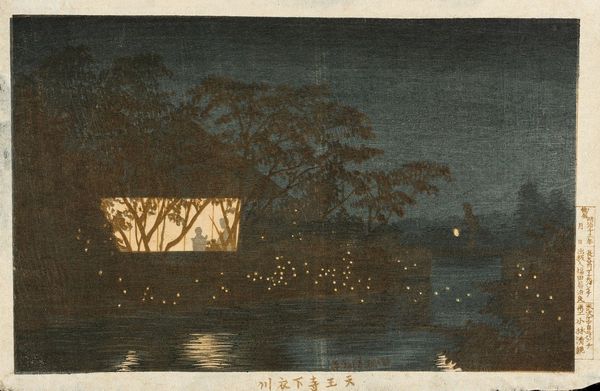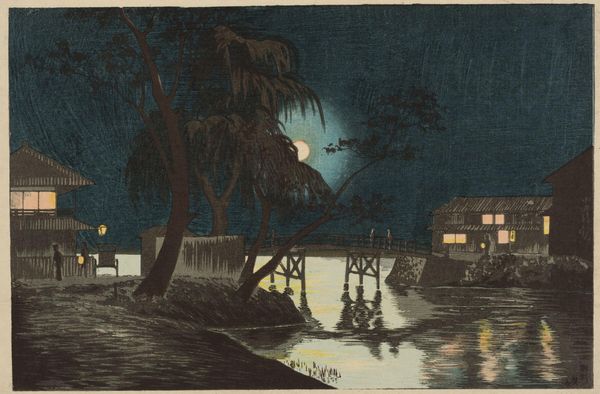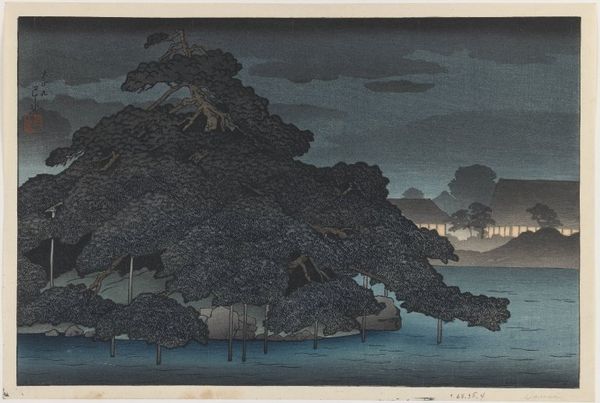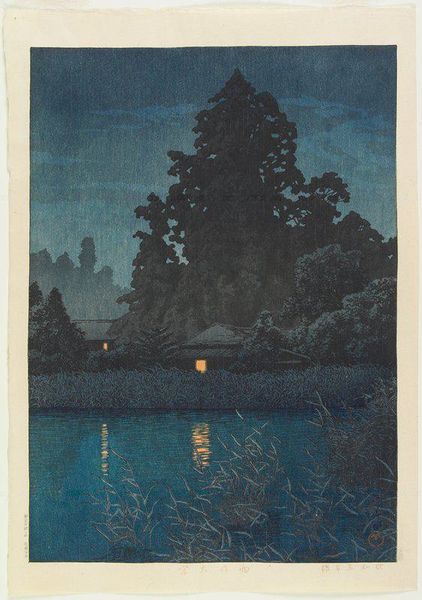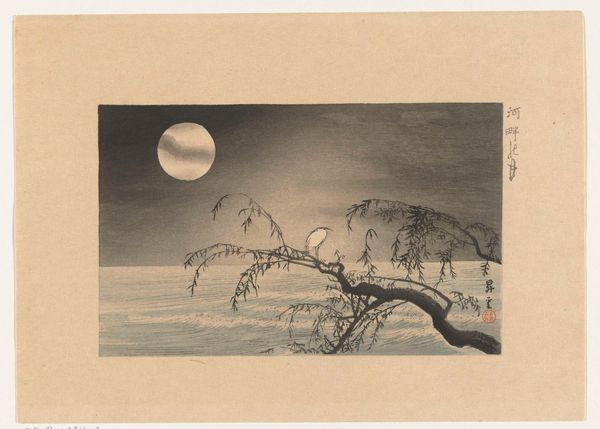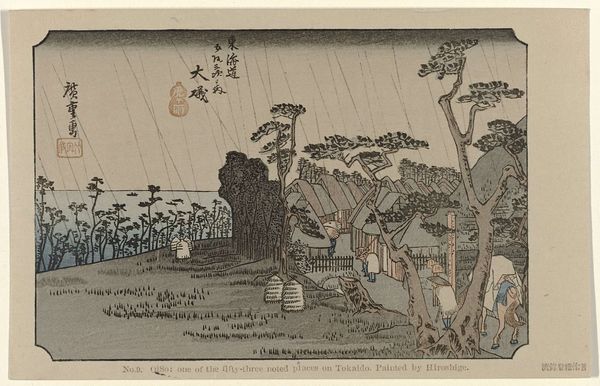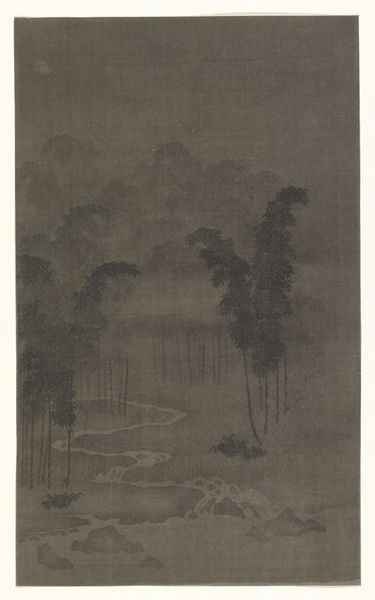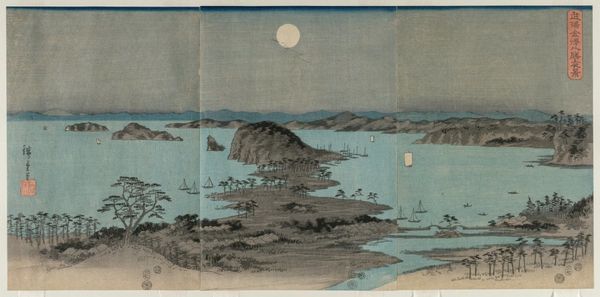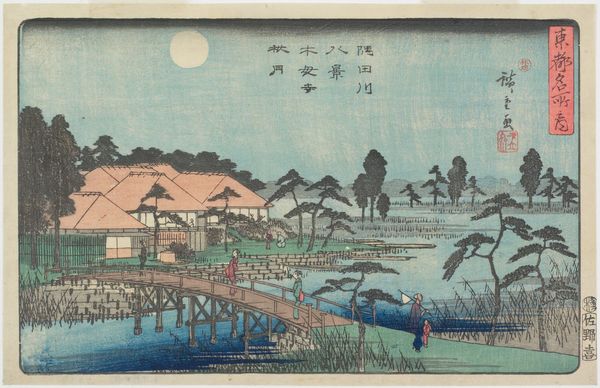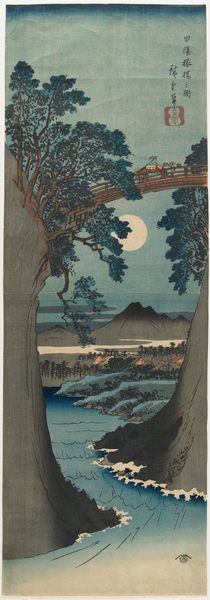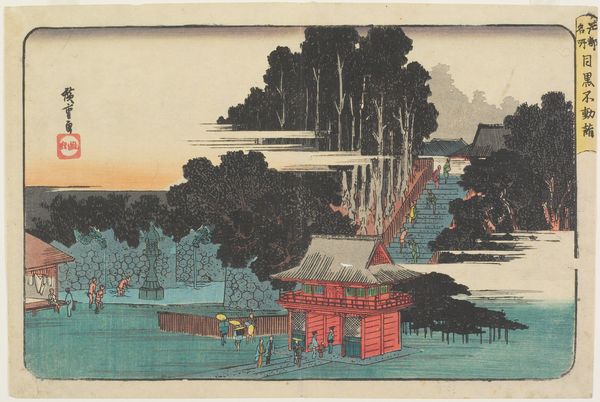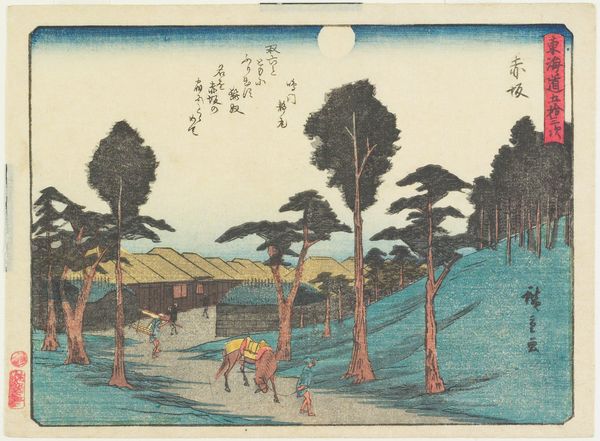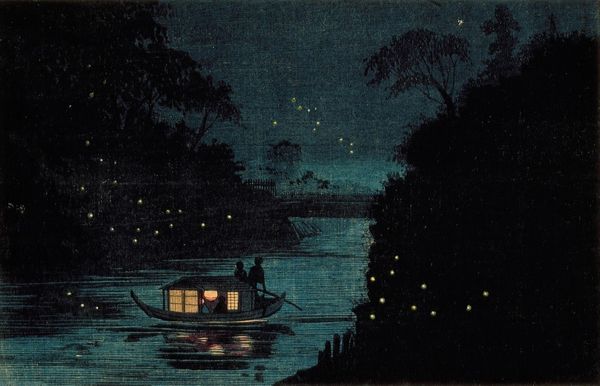
Copyright: Public Domain: Artvee
Curator: Just look at this serene nocturnal scene. The woodblock print is titled "The Komoro River at Tennoji" by Kobayashi Kiyochika, and dates to between 1877 and 1882. Editor: It has such a melancholic, almost ghostly mood, wouldn’t you say? The glowing windows against the deep blues and blacks of the night… it feels like a memory fading at the edges. Curator: Kiyochika was certainly working in a transitional period. His style reflects the influence of Western art trends, such as Impressionism, that were just arriving in Japan, which altered the established visual language. But one can tell he embraced Ukiyo-e sensibilities in his works too. Editor: The use of light, though! Those fireflies flickering over the water—are they fireflies or souls of the departed? Their reflections shimmering…light becomes a symbol, doesn’t it? It pulls the viewer in and adds meaning, almost a hopeful glint in a dark setting. Curator: Indeed, light, especially in Japanese art and culture, can symbolize hope, enlightenment, and even spiritual guidance. That’s something common even in Shinto beliefs, and the lantern light, the moon reflected in the water, all of that can signal this, and offer comfort. Editor: What I find fascinating, too, is how this print straddles public and private space. There are these suggestive figures behind the lit window, but everything beyond exists in a realm of collective experience. Curator: It provides us with the chance to consider the function of public spaces such as a riverside—were these zones for communal leisure and contemplation, spaces informed by folklore or local events? This becomes much clearer as the country rapidly moves into modernisation. Editor: And those details—fireflies, silhouetted figures—create a compelling social portrait and landscape of a particular moment. This work encapsulates the end of one era and hints at what is to come, offering a glimpse into societal transition and change. I'm captivated by how this print conveys so much emotion with so few elements. Curator: Yes, a powerful piece, isn't it?
Comments
No comments
Be the first to comment and join the conversation on the ultimate creative platform.

